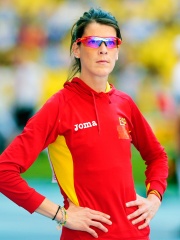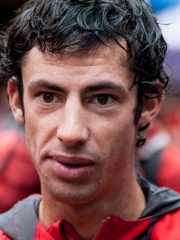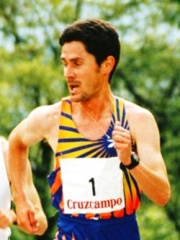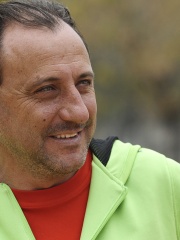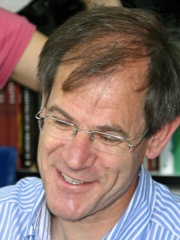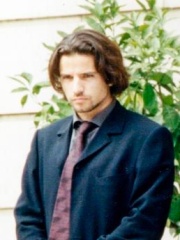

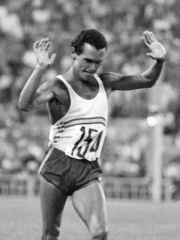
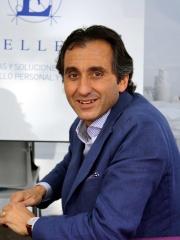




The Most Famous
ATHLETES from Spain
Top 10
The following people are considered by Pantheon to be the top 10 most legendary Spanish Athletes of all time. This list of famous Spanish Athletes is sorted by HPI (Historical Popularity Index), a metric that aggregates information on a biography's online popularity. Visit the rankings page to view the entire list of Spanish Athletes.

1. Juan Pacheco (1419 - 1474)
With an HPI of 57.52, Juan Pacheco is the most famous Spanish Athlete. His biography has been translated into 12 different languages on wikipedia.
Juan Pacheco, 1st Duke of Escalona (1419 – 1 October 1474), better known as Juan Pacheco, Marquess of Villena, was a Castilian noble of Portuguese descent who rose to power in the last years of the reign of Juan II of Castile and came to dominate the government of Castile during the reign of Juan II’s son and successor Henry IV of Castile. Created The 1st Duke of Escalona in 1472, his other titles included, among others, Marquess of Villena and Master of the Order of Santiago.

2. Francisco Villota (1873 - 1950)
With an HPI of 57.28, Francisco Villota is the 2nd most famous Spanish Athlete. His biography has been translated into 18 different languages.
Francisco Villota y Baquiola (18 November 1873 – 7 January 1950) was a Spanish pelotari (player of Basque pelota) who competed at the 1900 Summer Olympics in Paris, where he won Spain's first-ever Olympic Medal.

3. Jorge Llopart (1952 - 2020)
With an HPI of 54.99, Jorge Llopart is the 3rd most famous Spanish Athlete. His biography has been translated into 22 different languages.
Jorge "Jordi" Llopart Ribas (5 May 1952 – 11 November 2020) was a Spanish race walker. He competed in the 50 km event at the 1980, 1984, and 1988 Olympics and won a silver medal in 1980. The silver medal was Spain's first ever medal in athletics. Llopart was a European champion in this event in 1978.

4. Manuel Estiarte (b. 1961)
With an HPI of 54.88, Manuel Estiarte is the 4th most famous Spanish Athlete. His biography has been translated into 21 different languages.
Manel Estiarte Duocastella (born October 26, 1961, in Manresa) is a Spanish former water polo player born in Manresa, a municipality in Barcelona, Spain. He is currently a member of Pep Guardiola's technical staff at Manchester City. He is usually considered one of the two greatest water poloists of all time.

5. Juan Amat (1946 - 2022)
With an HPI of 54.79, Juan Amat is the 5th most famous Spanish Athlete. His biography has been translated into 17 different languages.
Juan Amat Fontanals (10 July 1946 – 12 May 2022) was a Spanish field hockey player. He won the silver medal with the Men's National Team at the 1980 Summer Olympics in Moscow. There he was topscorer of the tournament with sixteen goals, including fourteen penalty corners. Amat competed in four Olympics for Spain, starting in 1968. A player of Egara he was the brother of Francisco Amat, Jaime Amat, and Pedro Amat.

6. Natalya Goncharova (b. 0)
With an HPI of 53.48, Natalya Goncharova is the 6th most famous Spanish Athlete. Their biography has been translated into 11 different languages.
Natal(i)ya or Natalia Goncharova may refer to: Natalia Goncharova (1881–1962), Russian Cubo-Futurism painter Natalia Goncharova (diver) (born 1985), Russian diver Natalya Goncharova (fencer) (born 1974), Kazakhstani fencer Nataliya Goncharova (volleyball) (born 1989), Russian volleyball player Natalia Pushkina née Goncharova, wife of poet Alexander Pushkin

7. José Marín (b. 1950)
With an HPI of 50.18, José Marín is the 7th most famous Spanish Athlete. His biography has been translated into 15 different languages.
José Marín Sospedra (Catalan: Josep Marín i Sospedra; born 21 January 1950) is a retired Spanish racewalker.

8. Daniel Plaza (b. 1966)
With an HPI of 49.97, Daniel Plaza is the 8th most famous Spanish Athlete. His biography has been translated into 24 different languages.
Daniel Plaza Montero (born 3 July 1966) is a Spanish former race walker who competed in the 20 km event at the 1988, 1992 and 1996 Olympic Games.

9. Alfonso Menéndez (b. 1966)
With an HPI of 49.91, Alfonso Menéndez is the 9th most famous Spanish Athlete. His biography has been translated into 19 different languages.
Alfonso Menéndez Vallín (born 31 May 1966 in Avilés, Asturias) is a Spanish archer and Olympic champion. He competed at the 1992 Summer Olympics in Barcelona, where he won a gold medal with the Spanish archery team, together with teammates Antonio Vázquez and Juan Holgado.

10. Tina Charles (b. 0)
With an HPI of 49.63, Tina Charles is the 10th most famous Spanish Athlete. Their biography has been translated into 10 different languages.
Tina Charles may refer to: Tina Charles (singer) (born 1954), English singer Tina Charles (basketball) (born 1988), American basketball player
People
Pantheon has 273 people classified as Spanish athletes born between 1419 and 2004. Of these 273, 266 (97.44%) of them are still alive today. The most famous living Spanish athletes include Manuel Estiarte, Natalya Goncharova, and José Marín. The most famous deceased Spanish athletes include Juan Pacheco, Francisco Villota, and Jorge Llopart. As of April 2024, 32 new Spanish athletes have been added to Pantheon including Domingo Manrique, Patricia Guerra, and María Carmen Barea.
Living Spanish Athletes
Go to all RankingsManuel Estiarte
1961 - Present
HPI: 54.88
Natalya Goncharova
HPI: 53.48
José Marín
1950 - Present
HPI: 50.18
Daniel Plaza
1966 - Present
HPI: 49.97
Alfonso Menéndez
1966 - Present
HPI: 49.91
Tina Charles
HPI: 49.63
Ruth Beitia
1979 - Present
HPI: 49.11
Kílian Jornet Burgada
1987 - Present
HPI: 48.92
Martín Fiz
1963 - Present
HPI: 48.61
Fermín Cacho
1969 - Present
HPI: 48.48
Abel Antón
1962 - Present
HPI: 48.29
José Manuel Abascal
1958 - Present
HPI: 48.06
Deceased Spanish Athletes
Go to all RankingsJuan Pacheco
1419 - 1474
HPI: 57.52
Francisco Villota
1873 - 1950
HPI: 57.28
Jorge Llopart
1952 - 2020
HPI: 54.99
Juan Amat
1946 - 2022
HPI: 54.79
Jesús Rollán
1968 - 2006
HPI: 45.61
Yago Lamela
1977 - 2014
HPI: 40.89
William Bender
1930 - 2014
HPI: 9.21
Newly Added Spanish Athletes (2025)
Go to all RankingsDomingo Manrique
1962 - Present
HPI: 47.22
Patricia Guerra
1965 - Present
HPI: 46.09
María Carmen Barea
1966 - Present
HPI: 46.05
Enrique Míguez
1966 - Present
HPI: 44.97
Jordi Calafat
1968 - Present
HPI: 44.95
Natalia Dorado
1967 - Present
HPI: 44.78
Virginia Ramírez
1964 - Present
HPI: 44.60
Javier García
1966 - Present
HPI: 44.34
Sandra Azón
1973 - Present
HPI: 44.27
Salvador Gómez
1968 - Present
HPI: 42.79
Josep María Abarca
1974 - Present
HPI: 42.45
Begoña Vía Dufresne
1971 - Present
HPI: 42.17
Overlapping Lives
Which Athletes were alive at the same time? This visualization shows the lifespans of the 6 most globally memorable Athletes since 1700.

